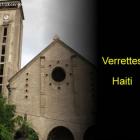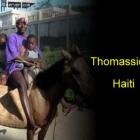ADVERTISEMENT
Colonization - Haiti Observer Blog
Colonization, Haiti Observer Blog. Read the following articles about Colonization
Fort-Liberte In The Nord Department Of Haiti
Fort-Liberté is located in Haiti's Nord-Est-Department. In Haiti, it is the oldest country and Haiti got its independence here on November 29,1803. The Dominican Republic is located close to its border. Around 11,465 people inhabit the place. The language spoken in the region is Creole. Hurricanes, storms and sunshine are all experienced bringing changes in temperature.
How It Got Its Name
Indians inhabited the region originally after which the Spanish colonists came. In 1578 they found the city of Bayaja and in 1605 abandoned it. In 1732 the French reoccupied it as Fort-Dauphin. In 1764, Spanish forces captured it and in 1801 shortly, after independence was declared in 1803, it was restored to the French.
Jacmel, a city of former wealthy coffee merchants
The City of Jacmel was originally founded 1698 and became a major coffee trading centre during the colonization period with some of its residents, wealthy coffee merchants, considered at the time to be some of the most influential people in the Colony.
One important event that will change the shape of this influential city of Jacmel was the fire of 1896. This fire reduced the entire city to almost nothing, with only a few buildings left standing. The city of Jacmel was rebuilt but this time with a structure that will prove itself over time. Many of the homes since the fire of 1896 were made with prefabricated cast-iron pillars and balconies which would withstand fire. These materials were designed and built in France and shipped to Haiti.
Carnival in Haiti - Ciray Costume
This is what I know about "Madi Gras Ciray" which is the people you always see in the carnival that you don't want them to come close to.
According to some some elderly Haitians that i had the privilege to speak to about the Haitian Carnival, I learned that the "Madi gras Ciray do have a meaning in the Haitian history going back to the colonization period.
Painting oneself in black has been a way to avoid capture and consequently heavy punishment from the Slave master. I was told that during the season that came before easter, only the "Colon or slave masters were allowed to do public celebration. The Afranchi or "Les Gens de Couleur" were to some extent allowed to participate in some limited celebration. For the Black slaves, public celebration were forbidden
Port-Margot, known for numerous rivers
The town of Borgne's other half in the Borgne Arrondissement located in the Nord Department is the municipality of Port-Margot. It is known for its numerous rivers, beautiful beaches, and mountainous geography. The municipality is composed of six sections, namely Bas-Petit, Bas-Quartier, Bras Gauche, Borgne Corail, Grande Plaine, and Haut Petit.
Port-Margot is home to about 37,000 Haitians who are mostly of Protestant faith. Most of them live a simple life, relying heavily on the municipality's many rivers for their livelihood. Rich vegetation is the most beneficial use of the rivers of Port-Margot, resulting to the heavy production cocoa and coffee. Historically, the municipality was Saint Dominque first French settlement. It is composed of several elementary schools and high schools, as well as a few health centres.
Plaine-du-Nord and Saint Jacques Fiesta
Haiti's Nord Department is in the northern most part of the country. It is where the small municipality of Plaine-du-Nord, often referred to as Plèn dinò in Creole, is located. It is considered an essential part of Haitian history and is one of the centres of the voodoo religion in the country.
Plaine-du-Nord is the historical site where the battle between Haiti's French colonizers and African slaves who worked in plantations began. This led to Haiti's independence from its colonizers and the freedom of slaves who became the very first official Haitians. The municipality is currently considered as the country's Pilgrimage Festival capital, which attracts thousands of worshippers and foreign visitors yearly. One of Plain-du-Nord's biggest, most important festivals is the Saint Jacques Fiesta, which is celebrated every 25th of July. It is then followed by the Saint Anne celebration a day after. Pilgrims usually stay for 15 days in the municipality during these festivities in order to offer food to the less fortunate, light candles, and donate money to the local churches.
Our objective is to share with you news and information about Haiti and the people of Haiti. Traditions, habits and the way we were or grew are alive in this site. We highly recommend that you Subscribe to our Newsletter and also share with us some of the things that are memorable and made us unique people.

 Something to think about
Something to think about  Verrettes, Haiti
Verrettes, Haiti  Haitians are a Proud People
Haitians are a Proud People  Thomassique, Haiti
Thomassique, Haiti  Newsletter
Newsletter